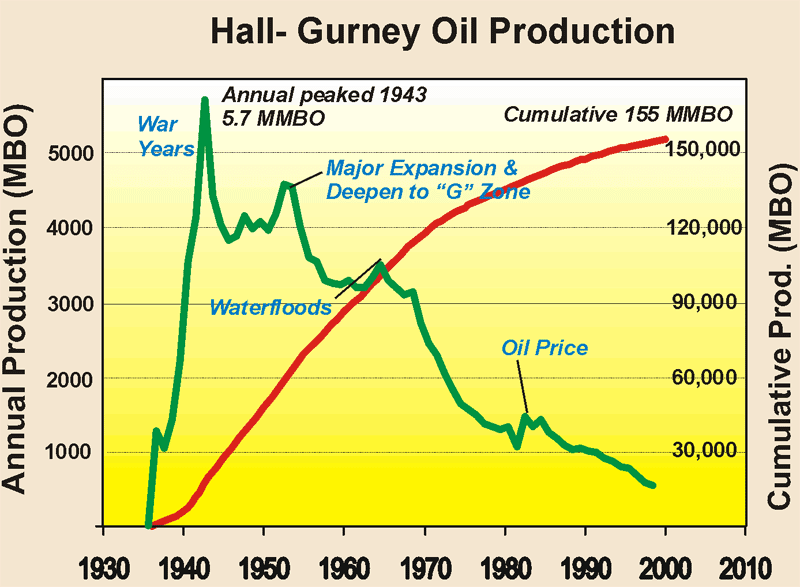
Kansas Geological Survey
Open-file Report 2001-38

|
|
Kansas Geological Survey Open-file Report 2001-38 |
Discovered in 1931, the Hall-Gurney Field did not have significant production until the late 1930's when over 300 wells were drilled The maximum well count of approximately 1400 wells was not reached until the early 1960's. Peak production was attained in 1943 when nearly 6 million barrels of oil was produced. Most early production as well as significant waterflood oil is from the Upper Pennsylvanian L-KC Groups. The first waterfloods were accidental "dump" floods caused by casing leaks or poor cement jobs. Successful waterflood pilots in the late 1950's led to widespread L-KC waterfloods in the early 1960's most of which depleted the reservoirs by the early 1980's. It was common to recover 50-100% of primary production with the waterfloods. As the floods reached their economic limit uphole zones in the Upper Pennsylvanian carbonates of the Toronto, Plattsmouth and Topeka as well as the Lower Permian Tarkio sandstones yielded significant oil. The L-KC may hold promise for CO2 miscible flooding and is the target for a DOE funded pilot project. Thus a second round of reservoir characterization is now underway.

|
|
e-mail : webadmin@kgs.ku.edu
Last updated December 2001
http://www.kgs.ku.edu/PRS/publication/OFR2001-38/P1-06.html